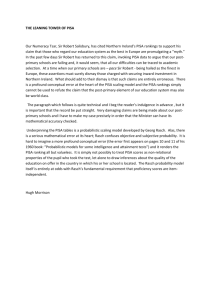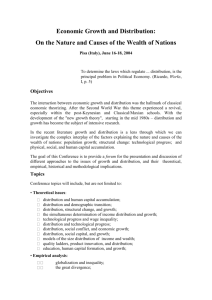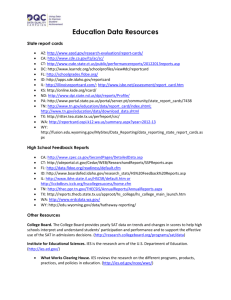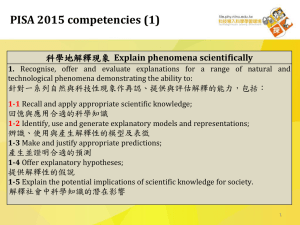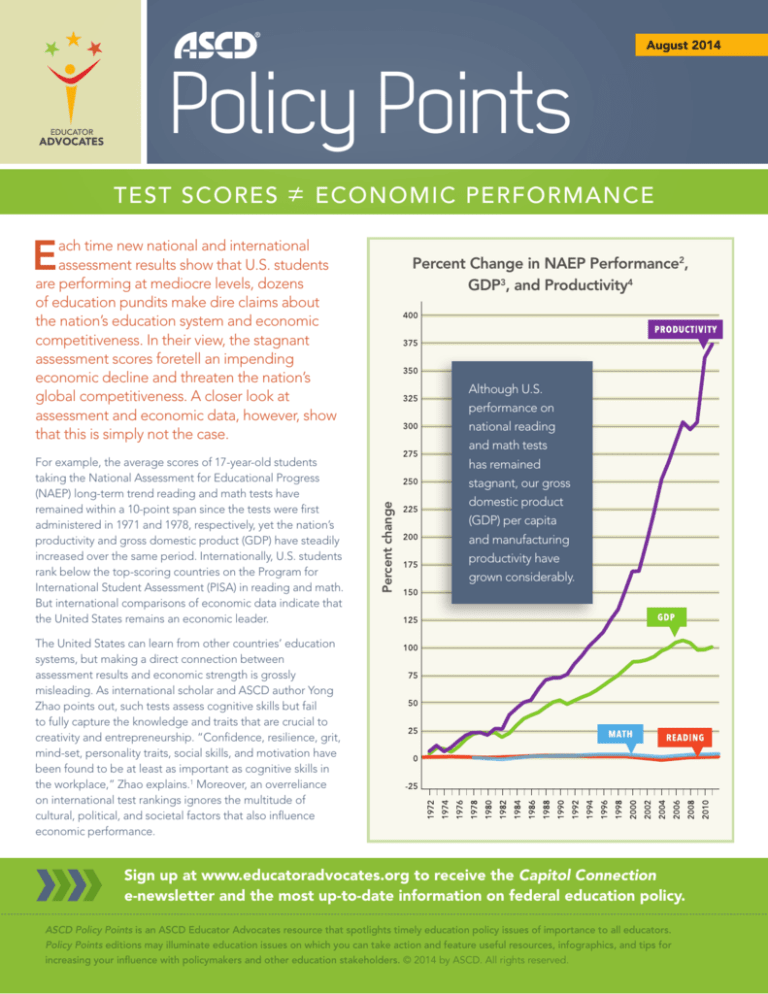
August 2014
EDUCATOR
ADVOCATES
Policy Points
TEST SCORES
≠
ECONOMIC PERFORMANCE
E
ach time new national and international
assessment results show that U.S. students
are performing at mediocre levels, dozens
of education pundits make dire claims about
the nation’s education system and economic
competitiveness. In their view, the stagnant
assessment scores foretell an impending
economic decline and threaten the nation’s
global competitiveness. A closer look at
assessment and economic data, however, show
that this is simply not the case.
Percent change
For example, the average scores of 17-year-old students
taking the National Assessment for Educational Progress
(NAEP) long-term trend reading and math tests have
remained within a 10-point span since the tests were first
administered in 1971 and 1978, respectively, yet the nation’s
productivity and gross domestic product (GDP) have steadily
increased over the same period. Internationally, U.S. students
rank below the top-scoring countries on the Program for
International Student Assessment (PISA) in reading and math.
But international comparisons of economic data indicate that
the United States remains an economic leader.
Percent Change in NAEP Performance2,
GDP3, and Productivity4
Although U.S.
performance on
national reading
and math tests
has remained
stagnant, our gross
domestic product
(GDP) per capita
and manufacturing
productivity have
grown considerably.
The United States can learn from other countries’ education
systems, but making a direct connection between
assessment results and economic strength is grossly
misleading. As international scholar and ASCD author Yong
Zhao points out, such tests assess cognitive skills but fail
to fully capture the knowledge and traits that are crucial to
creativity and entrepreneurship. “Confidence, resilience, grit,
mind-set, personality traits, social skills, and motivation have
been found to be at least as important as cognitive skills in
the workplace,” Zhao explains.1 Moreover, an overreliance
on international test rankings ignores the multitude of
cultural, political, and societal factors that also influence
economic performance.
Sign up at www.educatoradvocates.org to receive the Capitol Connection
e-newsletter and the most up-to-date information on federal education policy.
ASCD Policy Points is an ASCD Educator Advocates resource that spotlights timely education policy issues of importance to all educators.
Policy Points editions may illuminate education issues on which you can take action and feature useful resources, infographics, and tips for
increasing your influence with policymakers and other education stakeholders. © 2014 by ASCD. All rights reserved.
These charts compare the U.S.’s PISA results and economic performance to four
geographically diverse countries that are among the top 15 performing nations on the PISA in both
reading and math. The United States, in contrast, ranks 24th in reading and 36th in math.
PISA Performance5
Although each country’s
average scale scores
fluctuate slightly over time,
U.S. scores consistently fall
below these top-performing
countries; the United
States also ranks below
the overall average of the
34 developed countries
participating in the exam.
Gross Domestic Product Per Capita3
The U.S.’s lead in GDP
over these top-performing
PISA countries has
increased, with the
exception of Singapore.
Productivity4
Productivity data (which
measures workforce
efficiency) show that the
United States has improved
greatly over the past
decade, establishing the
country as a top performer.
SOURCES
Zhao, Yong. (2014, March 16). How does PISA put
the world at risk (part 2): Glorifying Educational
Authoritarianism [blog post]. Retrieved from http://
zhaolearning.com/2014/03/16/how-does-pisa-putthe-world-at-risk-part-2-glorifying-educationalauthoritarianism/
1
2
2
National Center for Education Statistics. (n.d.). NAEP
Data Explorer. U.S. Department of Education, Institute of
Education Sciences. Retrieved June 10, 2014 from https://
nces.ed.gov/nationsreportcard/lttdata/
4
Bureau of Labor Statistics. (2013, April 29). International
Labor Comparisons, GDP per capita and per hour. United
States Department of Labor. Retrieved June 10, 2014 from
http://www.bls.gov/ilc/dashboards.htm
5
3
Bureau of Labor Statistics. (2013, April 29). International
Labor Comparisons, Productivity and unit labor costs.
United States Department of Labor. Retrieved June 10,
2014 from http://www.bls.gov/ilc/dashboards.htm
National Center for Education Statistics. (n.d.). PISA
Data Explorer. U.S. Department of Education, Institute
of Education Sciences. Retrieved June 10, 2014 from
https://nces.ed.gov/surveys/pisa/idepisa/
To view previous issues, please visit www.ascd.org/policypoints.

